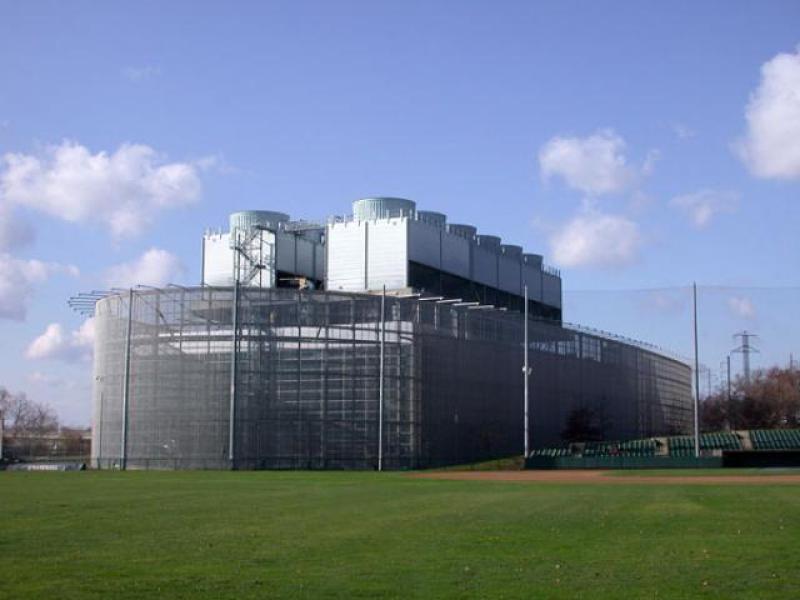The Module 7 Central Chiller Plant was originally designed to provide a total 50,000 tons of cooling to the University buildings to be built out in phases; expanding as the campus grows with the associated air conditioning demand. The existing plant has 40,000 tons of cooling capacity using electric refrigeration machines.
Module 7 Utility Building
The Module 7 Central Chiller Plant was originally designed to provide a total 50,000 tons of cooling to the University buildings to be built out in phases; expanding as the campus grows with the associated air conditioning demand. The existing plant has 40,000 tons of cooling capacity using electric refrigeration machines.
The most recent expansion has added to the building structure and provides the next 10,000 tons of cooling using steam driven turbines. Using steam provides diversity of power usage allowing steam to be used to displace electrical consumption, particularly on high electrical demand days. The plant controls were also optimized improving plant efficiency resulting in an estimated $600,000+ in annual utility cost savings.
Leers Weinzapfel Associates competition-winning design for a chilled water plant creates an attractive gateway presence, while retaining maximum use of the site for a new varsity baseball field. The screen wall around the chiller plant celebrates the industrial nature of the structure while giving it a distinct identity. By day, the corrugated perforated stainless steel screen is a shimmering, silvery object, by night, the building becomes a translucent glowing object. This major element of infrastructure is a memorable, elegant form, set in a vibrant green landscape. Mod 7 has expanded its capacity with 10,000 tons of new steam-driven chillers and associated cooling towers, plus capacity for future 10,000 additional tons.
